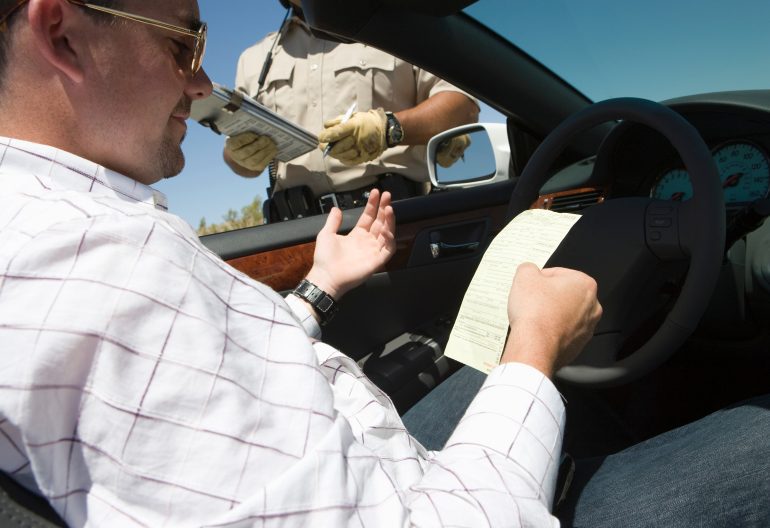Many people ask this question. About 80% of DUI suspects in Ohio provide a chemical sample. This sample is almost always in the form of a breath test. Officers usually only administer blood tests on “no refusal” weekends or if the DUI suspect was seriously injured and hospitalized.
Ohio lawmakers recently passed a per se DUI law. Drivers whose BAC content is above the legal limit, which is .08% for most non-commercial drivers, are intoxicated as a matter of law. So, chemical test cases are much easier for prosecutors to win. However, no medical test is perfect. Specifically, DUI chemical tests have some serious flaws, which are outlined below.
Especially in borderline BAC cases, like a .08 or .09, a Dayton criminal defense attorney can often leverage these test weaknesses and obtain a positive result. This positive result could be a complete dismissal of charges, a plea to a lesser-included offense, or a not-guilty verdict at trial.
Breath Test Flaws
During trials and pretrial hearings, police officer Breathalyzer technicians often dazzle jurors with tales of fuel cells and electrochemical reactions. These stories, which are true, create the impression that the Breathalyzer is a modern marvel, which is rarely incorrect.
That is not the way it is, however. Upon closer inspection, this argument is like saying an iPhone 12 is basically like one of those old-timey phones in Marx Brothers films.
Despite all its bells and whistles, the Breathalyzer is simply an updated version of the Drunk-O-Meter, a 1920s invention. Both the Breathalyzer and the Drunk-O-Meter measure breath alcohol and use that volume to estimate blood alcohol content. This extra step creates considerable room for error. Some common issues include:
- Mouth Alcohol: Officers are supposed to monitor defendants for fifteen minutes before they take a Breathalyzer test. But they rarely do so. If the defendant belches or vomits even a little bit, the rush of alcohol particles into the mouth skews the Breathalyzer results.
- Calibration: Like most scientific instruments, Breathalyzers are very sensitive. If the gadget has not been calibrated recently, the results could be off. Calibration is especially important if the air temperature has significantly changed since the last calibration. Similarly, if the Breathalyzer does not account for the defendant’s body temperature, the results could be off.
- Unabsorbed Alcohol: When people drink, most of the alcohol goes from their stomach through their livers and into their bloodstreams. As a result, if the defendant has been drinking within the last couple of hours, much of that alcohol is not yet in the blood. However, all that alcohol shows up in a breath test.
To drive home these flaws with jurors, attorneys often partner with degreed chemists. These individuals have much better credentials than police Breathalyzer techs. Frequently, these technicians learned everything they know about the Breathalyzer in a brief, law enforcement-sponsored seminar.
Blood Test Issues
Generally, blood tests are much more scientifically reliable than breath tests. However, there are still some issues.
Chain of custody is a good example. Generally, most blood samples travel from clinics to laboratories to police evidence lockers to courtrooms. If there is a gap in the chain of custody, the validity of the evidence could be an issue.
On a related note, an independent laboratory often obtains much different results than the ones police analysts claim they found.
Furthermore, police officers must have search warrants based on probable cause before they extract blood samples from defendants. Frequently, these warrants are based on suspicion of DUI as opposed to probable cause. There is a big difference between these two levels of proof.
Reach Out to an Experienced Lawyer
Scientific tests are not positive proof of guilt. For a confidential consultation with an experienced Dayton criminal defense attorney, contact The VanNoy Firm. Convenient payment plans are available.
You May Also Like Other Posts
Can I Ignore a Traffic Ticket?
Getting a traffic ticket can feel devastating, especially when you're already dealing with work, family and financial pressures. You might be tempted to simply ignore that citation and hope it…
Read More
Why Is High-Asset Divorce so Complicated?
A divorce is often an emotionally and financially draining experience. When large amounts of assets are involved, the process becomes more complicated. A high-asset divorce demands a deep understanding of…
Read More
Can I Keep My Retirement Savings After Divorce?
Going through a divorce is an emotionally and financially taxing experience. One of the most common worries people face is what will happen to the retirement savings they have worked…
Read More
How Can We Help You?
Make a consultation with our expert team to solve your problems.
Fill out the form below to schedule a consultation.









